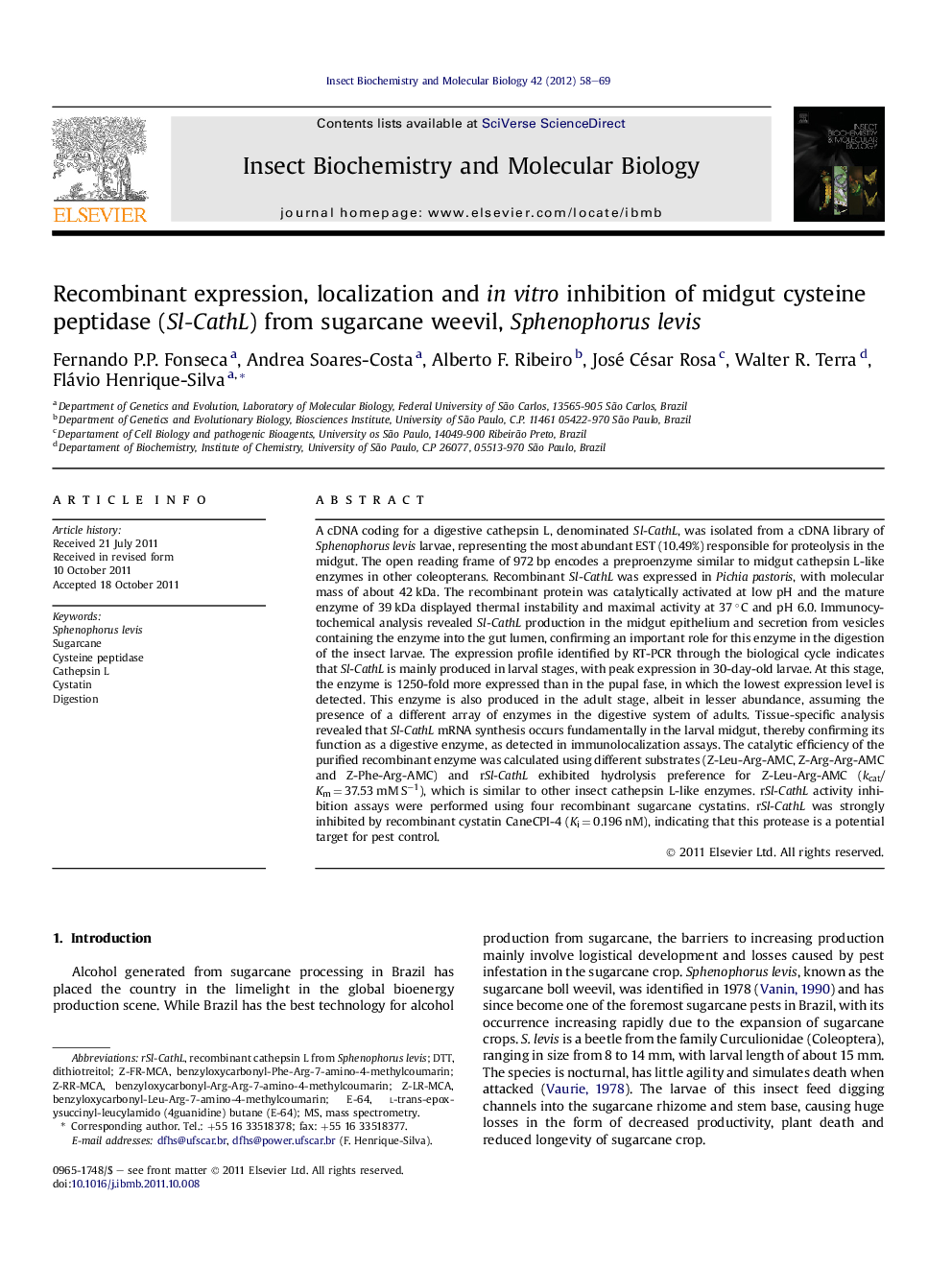| کد مقاله | کد نشریه | سال انتشار | مقاله انگلیسی | نسخه تمام متن |
|---|---|---|---|---|
| 1982374 | 1062282 | 2012 | 12 صفحه PDF | دانلود رایگان |

A cDNA coding for a digestive cathepsin L, denominated Sl-CathL, was isolated from a cDNA library of Sphenophorus levis larvae, representing the most abundant EST (10.49%) responsible for proteolysis in the midgut. The open reading frame of 972 bp encodes a preproenzyme similar to midgut cathepsin L-like enzymes in other coleopterans. Recombinant Sl-CathL was expressed in Pichia pastoris, with molecular mass of about 42 kDa. The recombinant protein was catalytically activated at low pH and the mature enzyme of 39 kDa displayed thermal instability and maximal activity at 37 °C and pH 6.0. Immunocytochemical analysis revealed Sl-CathL production in the midgut epithelium and secretion from vesicles containing the enzyme into the gut lumen, confirming an important role for this enzyme in the digestion of the insect larvae. The expression profile identified by RT-PCR through the biological cycle indicates that Sl-CathL is mainly produced in larval stages, with peak expression in 30-day-old larvae. At this stage, the enzyme is 1250-fold more expressed than in the pupal fase, in which the lowest expression level is detected. This enzyme is also produced in the adult stage, albeit in lesser abundance, assuming the presence of a different array of enzymes in the digestive system of adults. Tissue-specific analysis revealed that Sl-CathL mRNA synthesis occurs fundamentally in the larval midgut, thereby confirming its function as a digestive enzyme, as detected in immunolocalization assays. The catalytic efficiency of the purified recombinant enzyme was calculated using different substrates (Z-Leu-Arg-AMC, Z-Arg-Arg-AMC and Z-Phe-Arg-AMC) and rSl-CathL exhibited hydrolysis preference for Z-Leu-Arg-AMC (kcat/Km = 37.53 mM S−1), which is similar to other insect cathepsin L-like enzymes. rSl-CathL activity inhibition assays were performed using four recombinant sugarcane cystatins. rSl-CathL was strongly inhibited by recombinant cystatin CaneCPI-4 (Ki = 0.196 nM), indicating that this protease is a potential target for pest control.
Figure optionsDownload high-quality image (103 K)Download as PowerPoint slideHighlights
► Recombinant Sl-CathL is thermal instable and optimal condition for enzyme activity is at pH 6.0 and 37 °C.
► Sl-CathL is a true digestive enzyme produced through all the extension of midgut.
► Larvae 30 days-old exhibit the highest cathepsin L expression.
► CaneCPI-4 is a potent inhibitor of S. levis digestive cysteine peptidase: Ki = 0.196 nM.
Journal: Insect Biochemistry and Molecular Biology - Volume 42, Issue 1, January 2012, Pages 58–69